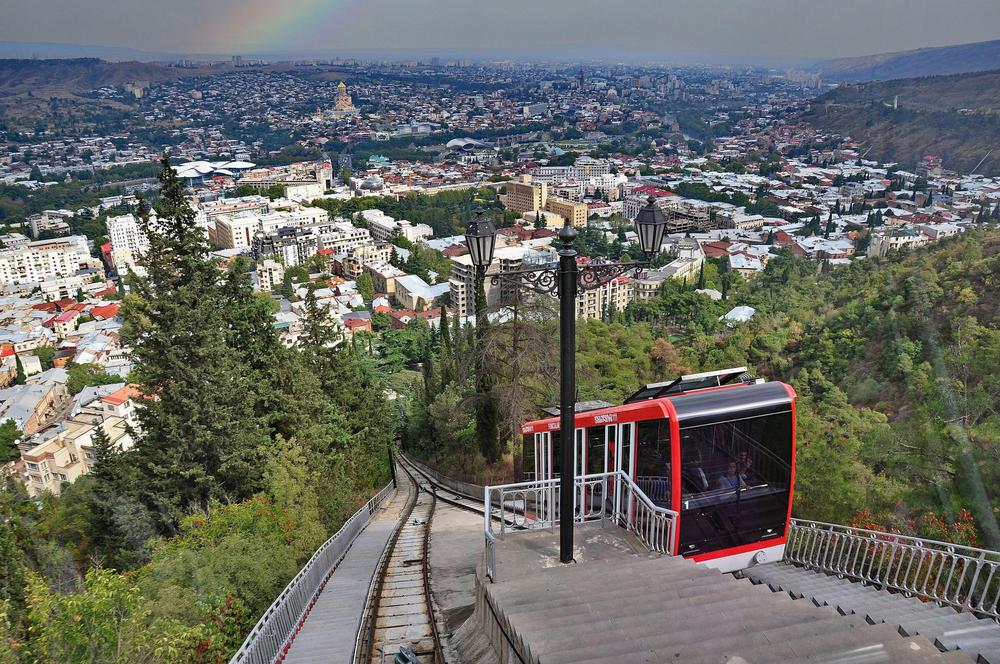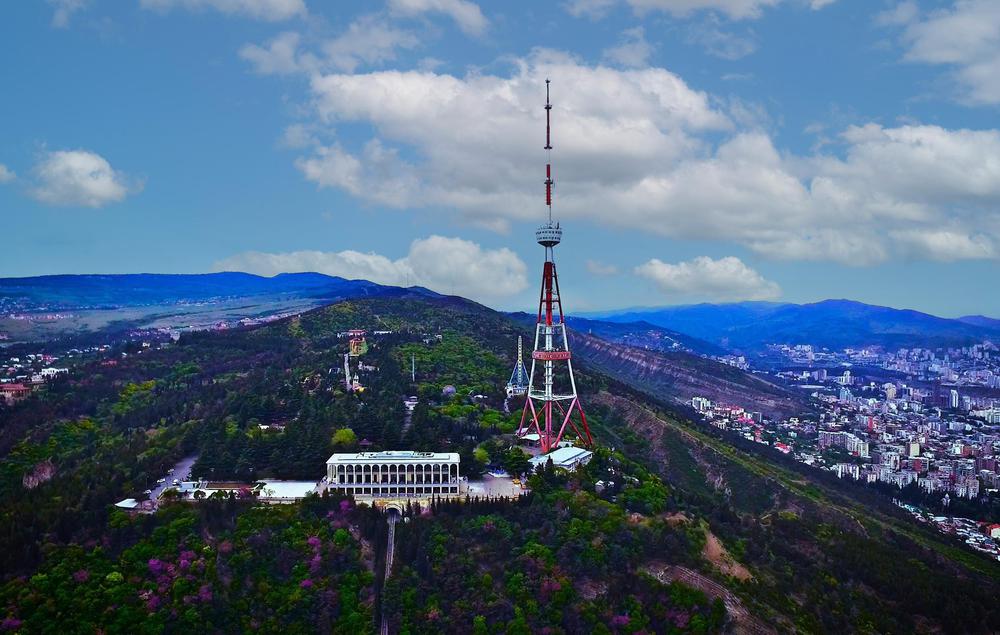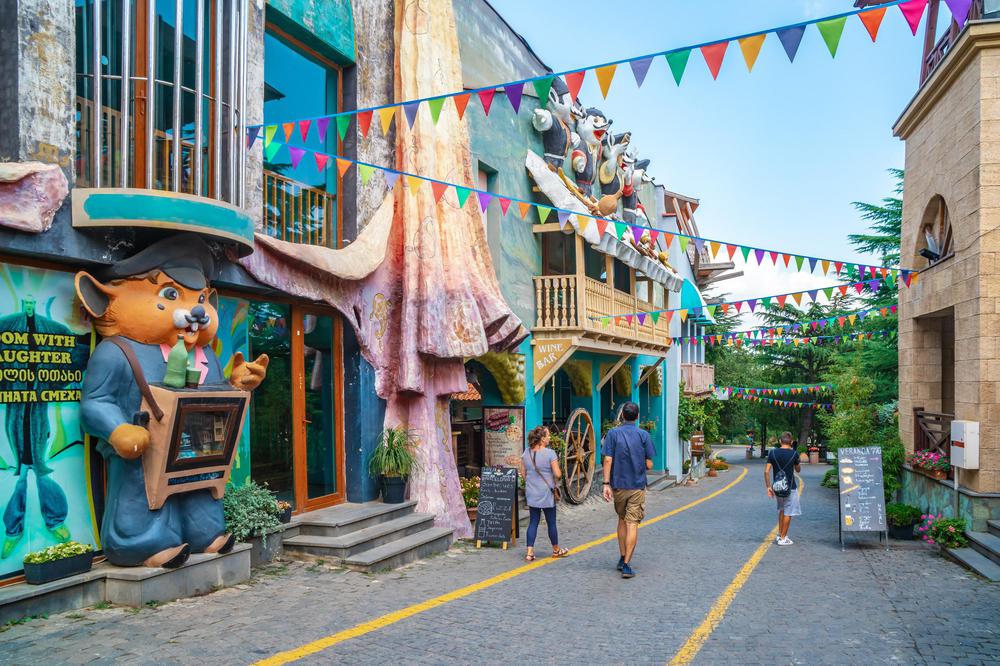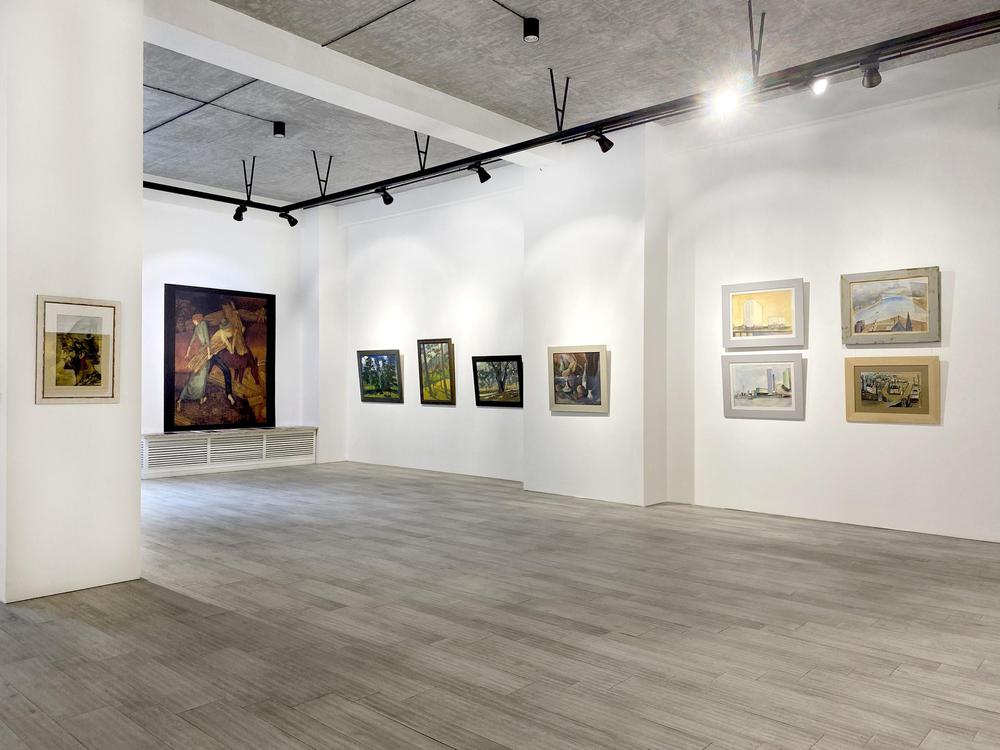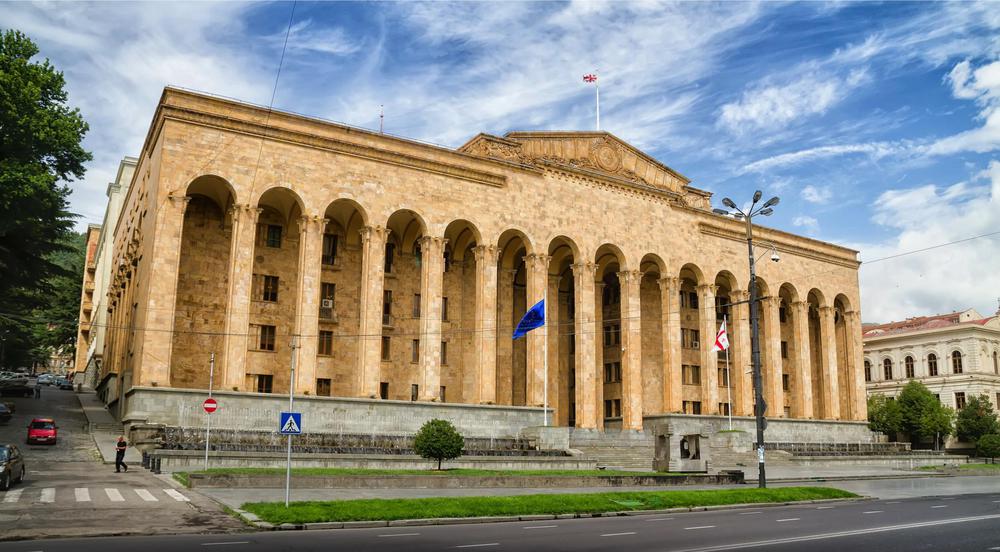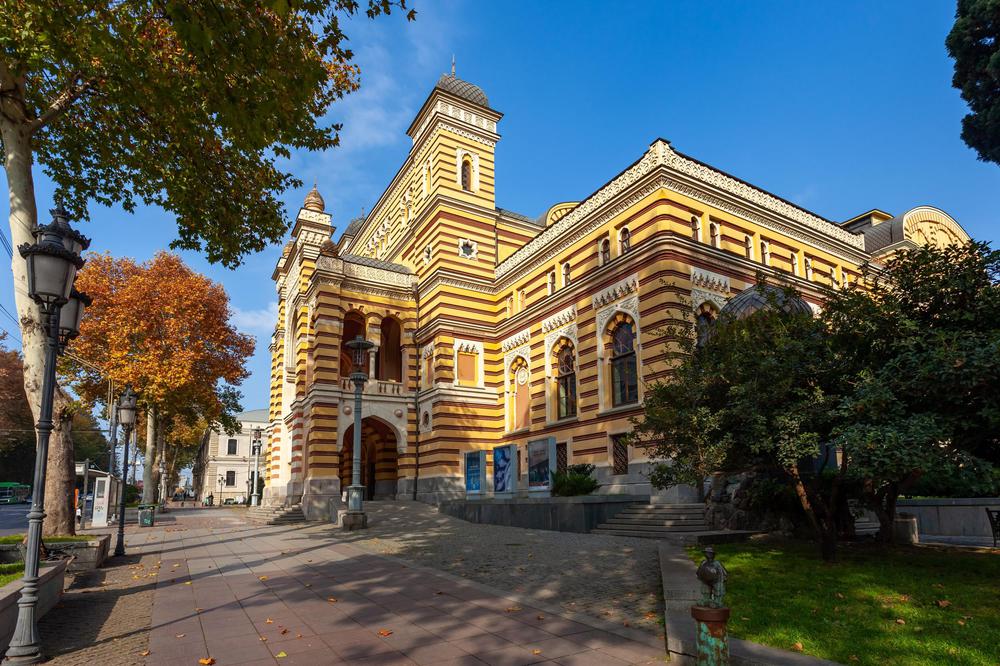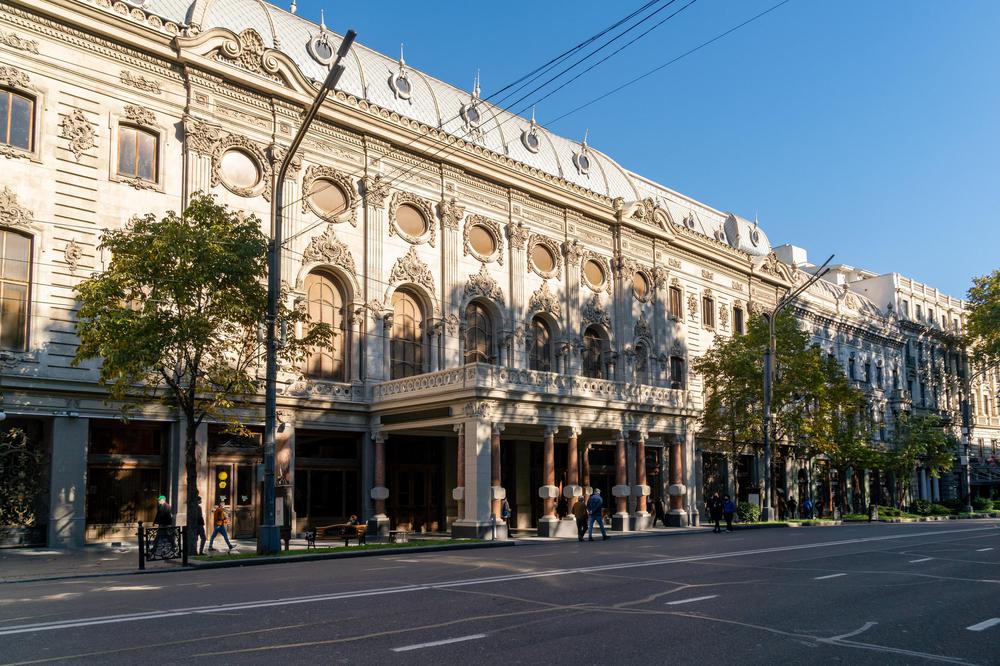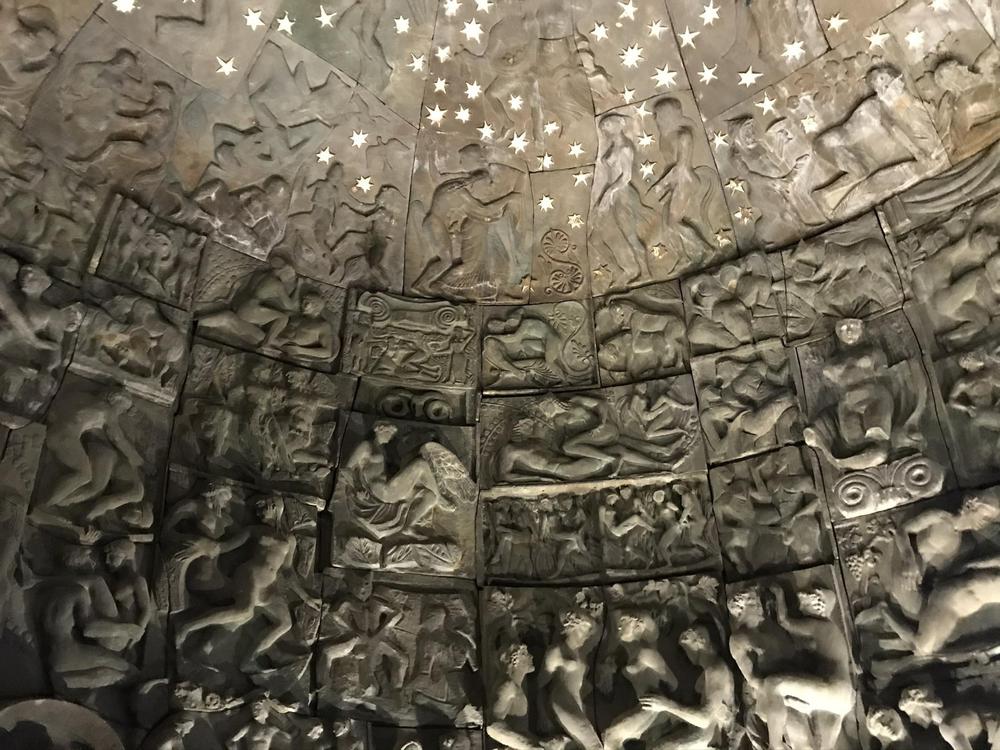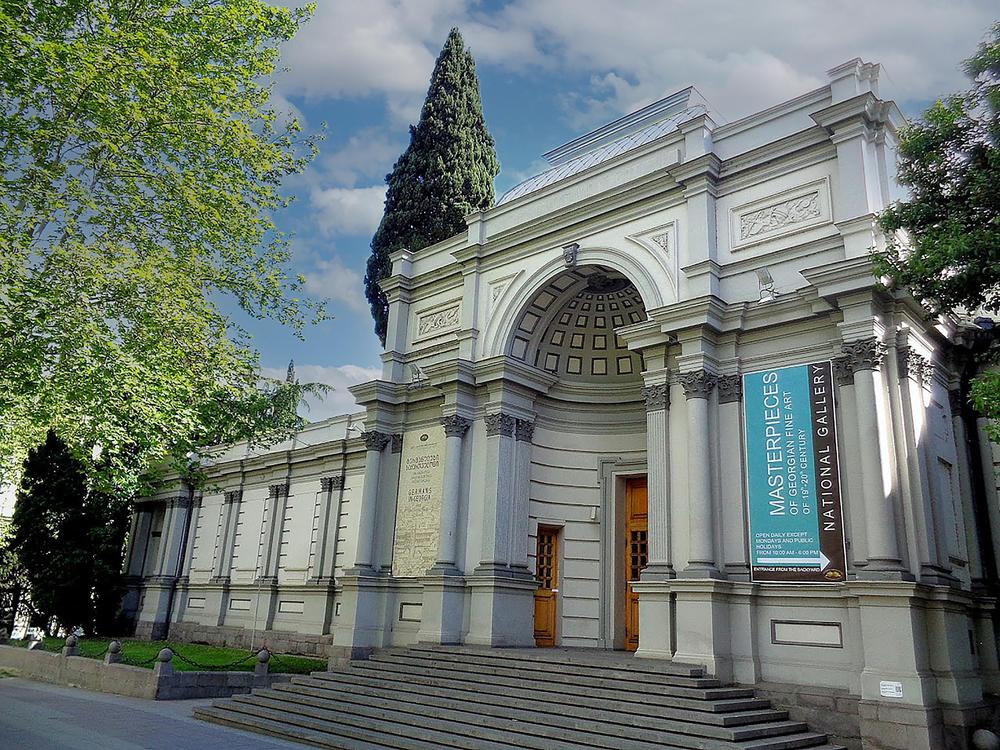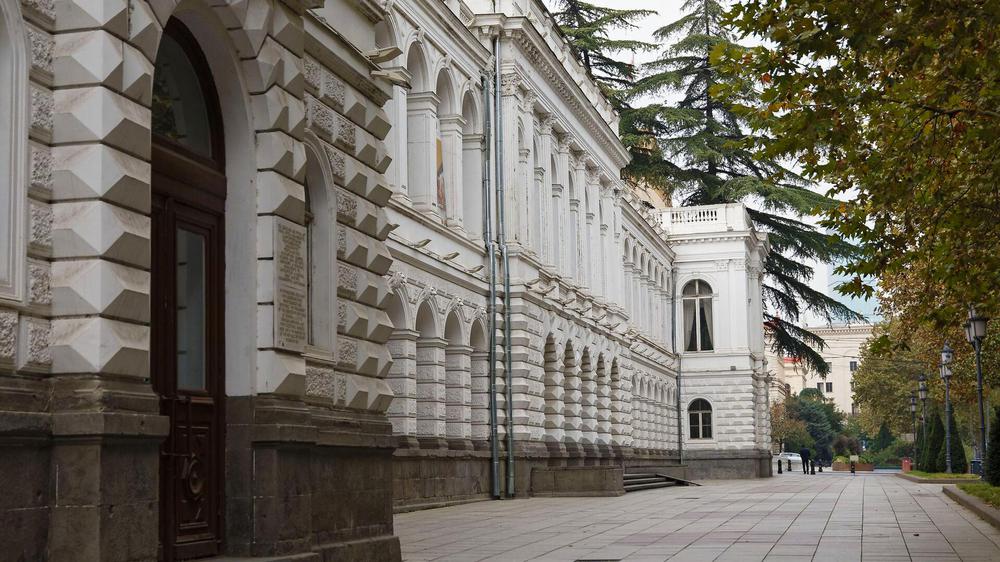The Mtatsminda Pantheon of Writers and Public Figures, nestled on the slopes of Mamadaviti Mountain (also known as Mtatsminda), holds a profound significance in Tbilisi's cultural and historical fabric. Commanding panoramic views of the entire city, the Pantheon and the neighbouring Mamadaviti Church together serve as an eloquent testament to Georgia's rich heritage.
Named after Holy Father David Garejeli, one of the thirteen Assyrian Fathers, Mtatsminda means "Holy Mountain." This title, bestowed in the IX century, reflects the Georgian tradition of naming Christian churches and locations after sacred places in Greece and Palestine. The Pantheon's concept, established in 1915, was finally realized in 1929, marking the centennial of Russian poet Alexander Griboyedov's death, who was interred here as per his last wish.
The Pantheon serves as the eternal resting place for 53 distinguished personalities of the XIX-XX centuries who left indelible footprints on Georgian history. Among the eminent figures resting here are writers, artists, public figures, and scientists, their contributions commemorated by monuments and busts created by renowned Georgian sculptors like Iakob Nikoladze, Elguja Amashukeli, and Merab Berdzenishvili.
Of special significance is the grave of Ilia Chavchavadze, a revered Georgian writer and the so-called "uncrowned king of Georgia". His grave features the poignant sculpture, "Grieving Georgia," crafted in 1909 by Iakob Nikoladze in Paris, two years after Chavchavadze's tragic death.
The Pantheon's history mirrors Georgia's political turns, reflecting the country's shifts from the Soviet era to its independence in 1991. During the Soviet period, the Pantheon was carefully administered, with several noteworthy figures relocated from the Didube Pantheon to Mtatsminda. The Pantheon's status rose further during Georgia's independence, with several significant changes made, including relocations of remains and erection of new memorials.
Today, Mtatsminda Pantheon, standing adjacent to the bustling Mtatsminda Park, remains a frequently visited spot by locals and tourists alike, administered by the Government of Tbilisi. It holds an enduring appeal, symbolizing the collective identity of Georgia, and it continues to be a significant cultural landmark in Tbilisi.


